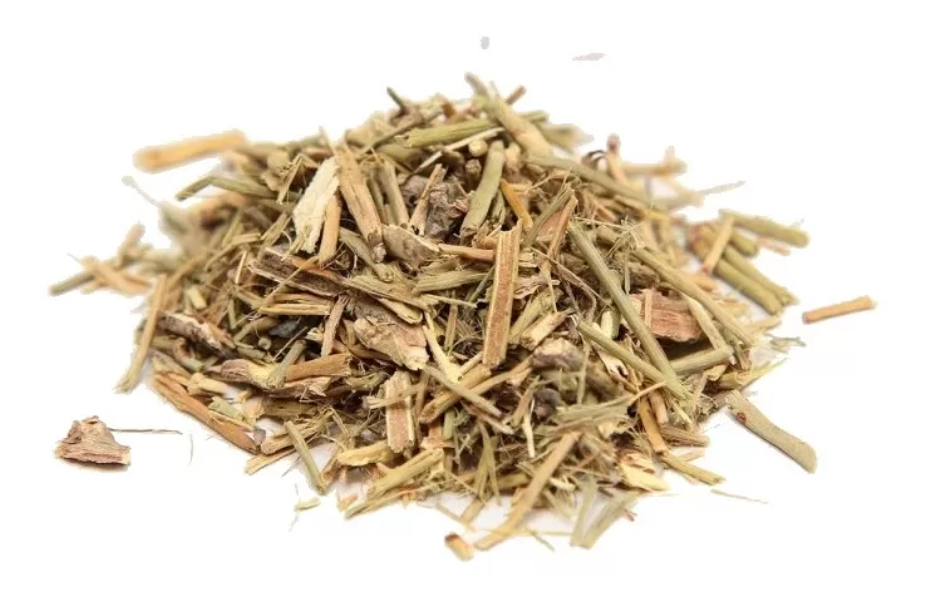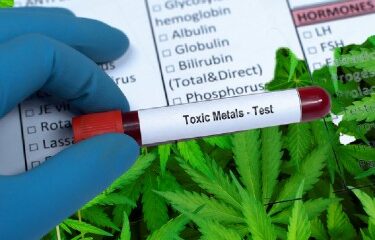Healthcare
What is Ma Huang from Traditional Chinese Medicine?

Ephedra Sinica was once seen as a miracle weight loss drug, but now Ma Huang has difference uses
A lot of people look for a miracle drug to promote weight loss and improve energy. In the 1990s, the ephedra plant became popular as a likely candidate, and not till after the mid-2000s, it was a normal ingredient used in dietary supplements. Although some research has shown that it could improve metabolism and loss of weight, some safety issues were also noted.
The three species of these stubborn plants that are the source of the drug are native to China, where the aerial parts are collected in the fall and dried for medicinal purposes. The scientific name of the plant is Ephedra sinica, E. Equisetina, E. intermedia.The roots of E. Sinica or E. intermedia, known as ma huang gen, are considered drugs in their own right and are used for their sleep-inducing properties. Ma Huang is also referred to as yellow horse, ephedra, and yellow astringent.
What is Ma Huang?
Ephedra also called Ma Huang is a condiment used in the preparation of various Traditional Chinese Medicines (TCM) for several centuries. It is mainly used to treat bronchitis, hay fever, and asthma. The plant is also recommended for symptoms of flu and cold, as well as cough, chills, nasal congestion, and fever.
Although Ephedra is a freely growing herb, the primary active ingredient of the plant, ephedrine, can be synthesized as medicine. Man-made ephedrine compounds, for example, pseudoephedrine, are usually used in over-the-counter cold treatments and are regulated as medicines. This is different from the regularization of ephedrine alkaloids obtained from the herb itself. These are governed as dietary supplements.
Before May 2004, ephedra was marketed as an energy-boosting supplement, a weight-loss product, and an athletic performance booster. Although there is some scientific evidence suggesting that it can improve one’s weight, the overall data on the effectiveness of this herbal supplement has been regarded as controversial and inconclusive. Furthermore, products that contain ephedra and are sold for the causes have been related to a lot of cases of heart arrhythmia ( heart attack/ irregular heartbeats), cases of stroke, and cases of death even. Many of the ephedra-containing products contain caffeine as well, and the mixture of both caffeine and ephedra improves the risk of getting negative side effects.
It is crucial to take note that due to the presence of ephedrine in some products, such as dietary supplements, amateur sporting events are not allowed to use them.
The Food and Drug Administration (FDA) has banned the use of dietary supplements that contain ephedrine, ma huang, Pinella, Ephedra, or Sida cordifolia. This ban does not include teas ( which are distributed as a normal food) or Chinese traditional herbal remedies that have been recommended by a traditional Chinese doctor.
Improving Metabolic Rates and Fat Burn
Quite a number of the research into the effects of ephedra on weight loss was done in the 1980s and early 2000s, before the ban on ephedrine supplements. Some components of ephedrine can affect your body, but the most notable of the effects are probably due to ephedrine.
Various studies have shown that ephedrine increases the resting number of metabolism i.e (the number of calories the body utilizes in a resting state). This may be a result of an increase in the number of calories burned by the muscles. Ephedrine can as enhance the process of burning fat in the body as well.
It was found in research that the number of calories burned off in the space of 24 hours was higher by 3.6% when ephedrine was used by adults of sound health, in comparison to when they used a placebo.
Another researcher discovered that once people went on an extremely low-calorie diet, their rate of metabolism dropped. However, this became partly avoided by using ephedrine. Added to the short-time period adjustments in metabolism, a few researchers concluded that ephedrine can encourage weight and fat loss over a longer period. In five studies of ephedrine while being compared to a placebo, ephedrine brought about a weight reduction of three pounds (1.3kg) per month greater than a placebo, for as much as four months. However, there is a lack of long-term data that can support the benefits of ephedrine for the loss of weight.
Furthermore, a lot of studies on ephedrine test the weight-loss of caffeine and ephedrine, in place of ephedrine alone.
Does it work well or not so well with caffine?
Various studies testing the weight-loss impact of ephedrine have mixed the ingredient with caffeine. The mix of the two seems to have greater impacts on your body than taking either of them alone. For instance, caffeine with ephedrine boosts the rate of metabolism more than only ephedrine.
In a study of obese and healthy overweight adults, the mixture of 24mgb of Ephedra and 79mg of caffeine increased the metabolic rate by 8% in 2 hours, in comparison to placebo. Some studies have even indicated that ephedrine and caffeine alone have no impact on weight loss, but the mixture of both produces a loss of weight. Taking the combination of ephedra and caffeine three times daily for 12 weeks reduced body fat by 7.9% compared to just 1.9% with placebo.
In another 6-month study of 167 obese and overweight individuals, dietary supplements containing ephedrine and caffeine were compared to placebo in a weight loss program. The group receiving ephedrine lost 9.5 pounds (4.3 kg) of fat in comparison to the group taking placebo, which lost only 5.9 pounds (2.7 kg) of fat.
The group taking ephedrine also reduced LDL (bad) cholesterol and body weight more than the group taking placebo. Overall, the available evidence suggests that products containing ephedrine, especially when combined with caffeine, may increase weight and fat loss.
Conclusion
Ma Huang is a stimulant herb obtained from the roots of Ephedra sinica. Many people have found it beneficial for weight loss, and also treating nasal congestion, common cold, asthma, and some other conditions. However, these uses have no scientific backing. However, the herb is banned in the US as there have been reports of life-threatening conditions and even death.
Source: https://cannabis.net/blog/medical/what-is-ma-huang-from-traditional-chinese-medicine
Business
New Mexico cannabis operator fined, loses license for alleged BioTrack fraud

New Mexico regulators fined a cannabis operator nearly $300,000 and revoked its license after the company allegedly created fake reports in the state’s traceability software.
The New Mexico Cannabis Control Division (CCD) accused marijuana manufacturer and retailer Golden Roots of 11 violations, according to Albuquerque Business First.
Golden Roots operates the The Cannabis Revolution Dispensary.
The majority of the violations are related to the Albuquerque company’s improper use of BioTrack, which has been New Mexico’s track-and-trace vendor since 2015.
The CCD alleges Golden Roots reported marijuana production only two months after it had received its vertically integrated license, according to Albuquerque Business First.
Because cannabis takes longer than two months to be cultivated, the CCD was suspicious of the report.
After inspecting the company’s premises, the CCD alleged Golden Roots reported cultivation, transportation and sales in BioTrack but wasn’t able to provide officers who inspected the site evidence that the operator was cultivating cannabis.
In April, the CCD revoked Golden Roots’ license and issued a $10,000 fine, according to the news outlet.
The company requested a hearing, which the regulator scheduled for Sept. 1.
At the hearing, the CCD testified that the company’s dried-cannabis weights in BioTrack were suspicious because they didn’t seem to accurately reflect how much weight marijuana loses as it dries.
Company employees also poorly accounted for why they were making adjustments in the system of up to 24 pounds of cannabis, making comments such as “bad” or “mistake” in the software, Albuquerque Business First reported.
Golden Roots was fined $298,972.05 – the amount regulators allege the company made selling products that weren’t properly accounted for in BioTrack.
The CCD has been cracking down on cannabis operators accused of selling products procured from out-of-state or not grown legally:
- Regulators alleged in August that Albuquerque dispensary Sawmill Sweet Leaf sold out-of-state products and didn’t have a license for extraction.
- Paradise Exotics Distro lost its license in July after regulators alleged the company sold products made in California.
Golden Roots was the first alleged rulebreaker in New Mexico to be asked to pay a large fine.
Source: https://mjbizdaily.com/new-mexico-cannabis-operator-fined-loses-license-for-alleged-biotrack-fraud/
Business
Alabama to make another attempt Dec. 1 to award medical cannabis licenses

Alabama regulators are targeting Dec. 1 to award the first batch of medical cannabis business licenses after the agency’s first two attempts were scrapped because of scoring errors and litigation.
The first licenses will be awarded to individual cultivators, delivery providers, processors, dispensaries and state testing labs, according to the Alabama Medical Cannabis Commission (AMCC).
Then, on Dec. 12, the AMCC will award licenses for vertically integrated operations, a designation set primarily for multistate operators.
Licenses are expected to be handed out 28 days after they have been awarded, so MMJ production could begin in early January, according to the Alabama Daily News.
That means MMJ products could be available for patients around early March, an AMCC spokesperson told the media outlet.
Regulators initially awarded 21 business licenses in June, only to void them after applicants alleged inconsistencies with how the applications were scored.
Then, in August, the state awarded 24 different licenses – 19 went to June recipients – only to reverse themselves again and scratch those licenses after spurned applicants filed lawsuits.
A state judge dismissed a lawsuit filed by Chicago-based MSO Verano Holdings Corp., but another lawsuit is pending.
Source: https://mjbizdaily.com/alabama-plans-to-award-medical-cannabis-licenses-dec-1/
Business
Pot Odor Does Not Justify Probable Cause for Vehicle Searches, Minnesota Court Affirms

The Minnesota Supreme Court affirmed that cannabis odor does not constitute probable cause to search a vehicle.
If Minnesota police search a vehicle solely based upon the smell of pot, they can’t justify searching a vehicle, even if there is evidence found of other alleged crimes. Even after appealing a lower court decision to suppress the evidence—twice—the Minnesota Supreme Court agreed, and the dismissal of his charges stands.
In a ruling filed regarding a case the State of Minnesota Court of Appeals on Sept. 13, the Minnesota Supreme Court affirmed that cannabis odor does not constitute probable cause to search a vehicle.
The case has been ongoing for two years. On July 5, 2021, just before 10 p.m., a Litchfield police officer stopped a car for an obscure local law: the light bar mounted on the vehicle’s grill had more auxiliary driving lights than are permitted under Minnesota law. The officer asked the driver, Adam Lloyd Torgerson, for his license and registration. Torgerson, his wife, and his child were present in the vehicle. The officer stated that he smelled pot and asked Torgerson if there was any reason for the odor, which he initially denied. But cops found a lot more than just pot.
A backup officer was called in. The couple denied possessing any pot, but Torgerson admitted to smoking weed in the past. The second officer stated that the weed odor gave them probable cause to search the vehicle and ordered them to exit the vehicle. The first officer searched the vehicle and found a film canister, three pipes, and a small plastic bag in the center console. The plastic bag contained a white powder and the film canister contained meth, which was confirmed in a field test.
Torgenson was charged with possession of meth pipe in the presence of a minor and fifth-degree possession of a controlled substance after the unwarranted search of Torgerson’s vehicle.
Police Aren’t Allowed to Do That, Multiple Courts Rule
But the search had one major problem—cops weren’t searching for a meth pipe. They only searched his car because they could smell pot, and the meth and paraphernalia were a surprise for everyone. Still, they had no grounds to search the vehicle. The man’s charges were later dismissed after the district court determined the odor of cannabis alone was insufficient basis for probable cause to search the vehicle, regardless of whatever other drug paraphernalia they found.
The state appealed the case, but the Minnesota Court of Appeals affirmed the district court’s decision. The case was appealed a second time, this time to the Minnesota Supreme Court, which agreed with the lower court’s ruling.
“This search was justified only by the odor of marijuana emanating from the vehicle,” the Minnesota Supreme Court decision reads. “Torgerson moved to suppress the evidence found during the search, arguing that the odor of marijuana, alone, is insufficient to create the requisite probable cause to search a vehicle under the automobile exception to the warrant requirement. The district court granted Torgerson’s motion, suppressed the evidence, and dismissed the complaint. The State appealed. The court of appeals affirmed the district court’s suppression order. Because we conclude that the odor of marijuana emanating from a vehicle, alone, is insufficient to create the requisite probable cause to search a vehicle under the automobile exception to the warrant requirement, we affirm.”
It amounts to basic human rights that apply—regardless of whether or not a person is addicted to drugs.
Other States do Precisely the Same Regarding Pot Odor as Probably Cause
An Illinois judge ruled in 2021 that the odor of cannabis is not sufficient grounds for police to search a vehicle without a warrant during a traffic stop.
Daniel J. Dalton, Associate Judge of the 14th Judicial Circuit, issued a ruling in response to a motion to suppress evidence in the case of Vincent Molina, a medical cannabis patient arrested for cannabis possession last year.
In that case, Molina was arrested despite the decriminalization of small amounts of cannabis in Illinois in 2019 with the passage of the Illinois Cannabis Regulation and Tax Act.
In some states, the issue of probable cause and cannabis was defined through bills.
Last April, the Maryland House of Delegates approved a bill that reduces the penalties for public cannabis consumption and bars police from using the odor of cannabis as the basis for the search of an individual or auto. Under Maryland’s House Bill 1071, law enforcement officers would be prohibited from using the odor of raw or burnt cannabis as probable cause to search a person or vehicle.
The rulings represent the rights of citizens when they are pulled over by police, even if there are hard drugs involved.
-

 Business2 years ago
Business2 years agoPot Odor Does Not Justify Probable Cause for Vehicle Searches, Minnesota Court Affirms
-

 Business2 years ago
Business2 years agoNew Mexico cannabis operator fined, loses license for alleged BioTrack fraud
-

 Business2 years ago
Business2 years agoAlabama to make another attempt Dec. 1 to award medical cannabis licenses
-

 Business2 years ago
Business2 years agoWashington State Pays Out $9.4 Million in Refunds Relating to Drug Convictions
-

 Business2 years ago
Business2 years agoMarijuana companies suing US attorney general in federal prohibition challenge
-

 Business2 years ago
Business2 years agoLegal Marijuana Handed A Nothing Burger From NY State
-

 Business2 years ago
Business2 years agoCan Cannabis Help Seasonal Depression
-

 Blogs2 years ago
Blogs2 years agoCannabis Art Is Flourishing On Etsy













